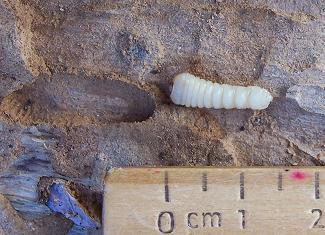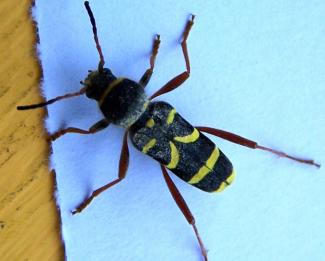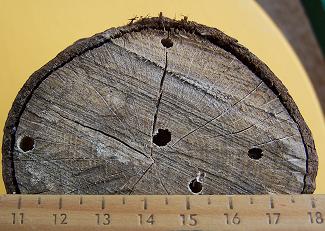Harberton Nature Notes and Pictures
Wasp Beetle
The culprit? Well, we discovered this one Spring after finding large larvae under the bark in some logs and hearing slight noises coming from the log basket. Then we found the occasional black and yellow beetle in our living room, about the size of a wasp - it was a 'wasp beetle', described as "wood-feeder as larvae, on hard, dead wood in the early stages of decay or in exposed dry situations where fungal decay is slow. [i.e. an outdoor log pile is ideal.] Adults feed on nectar and pollen of flowers".
Just as well these larvae don't get into your house timbers!


Apart from being similar in size and colour to a normal wasp, the wasp beetle also mimics the wasp in some aspects of its behaviour - but it won't sting you.
